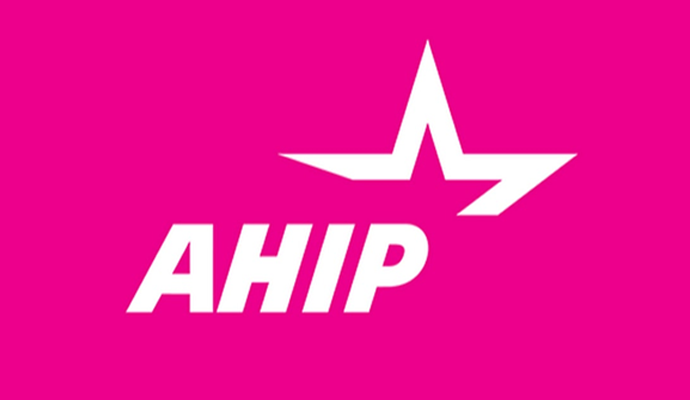Payers, Providers Under Fiscal Strain Rally To Combat COVID-19
As payers and providers alike face economic losses and enormous pressure to meet escalating demands of coronavirus, they find ways to support each other.

Source: AHIP
- Despite past conflicts, now more than ever payers and providers are showing support for each other in the face of the growing pandemic.
For more coronavirus updates, visit our resource page, updated twice daily by Xtelligent Healthcare Media.
Providers are overloaded as they rush to test more patients at risk for COVID-19 while also making room for the growing number of confirmed cases that need to be hospitalized. The crisis is expected to cripple many hospitals financially.
And as providers scramble to meet the demanding influx of coronavirus patients, payers have been working to diminish administrative burdens for providers while increasing access to care and lowering out-of-pocket healthcare spending for patients.
In the midst of it all, the public has been effusive in its support and gratitude for providers, and payers are no exception.
READ MORE: Top 10 Payers’ Strategies for Broadening Access to COVID-19 Care
Matthew Eyles, the president and chief executive officer of America’s Health Insurance Plans (AHIP), expressed payers’ gratitude and support of providers in a letter to American Hospital Association (AHA).
“On behalf of every health insurance provider in the country, I want to personally thank America’s hospitals and the people who work inside and outside of their four walls for their service and sacrifice,” Eyles wrote.
“Our country’s doctors, nurses, hospital personnel, emergency medical services workers and public health leaders are genuine health care heroes. In the most extreme environments imaginable, and despite severe risks to themselves and their families, they are answering the call of duty. They do so because their patients and their country desperately need them. They deserve our eternal gratitude.”
Eyles added that it was clear that hospitals are experiencing extreme amounts of fiscal and clinical pressure.
“Health insurance providers stand strong with you,” Eyles emphasized.
READ MORE: How Payers Use Special Enrollment Periods To Boost Coverage
From there, the letter outlined four primary ways in which healthcare payers are taking action to support their provider partners.
First, the letter highlighted payer approval of Congress’s emergency federal funding to hospitals. Eyles promised to advocate for more funding to hospitals in the future.
Second, Eyles renewed the payer organization’s commitment to waiving coronavirus testing and treatment costs. This is not only of benefit to patients, but also helps hospitals by ensuring payment and reducing the need for documentation.
The letter also pointed to payer-hospital partnerships that seek to further reduce administrative burdens for inpatient providers and ease common coronavirus response processes. By lowering the complexities surrounding treatment, hospital transfer, discharge, and payment, payers can protect providers from the additional stress that these practices cause during a pandemic.
Finally, Eyles called out payers’ expansion of telehealth services and how these tools can reduce the burden on providers to serve non-coronavirus patients.
READ MORE: COVID-19 to Impact Employer-Sponsored Health Plans for 3.5M
However, the letter did not stop with payers’ current actions.
Eyles noted a gap that payers must amplify efforts to fill: coverage for the unemployed and uninsured.
Citing a recent Health Management Association report, Eyles pointed out that anywhere from 12 to 35 million Americans could lose their employer-sponsored health insurance, largely due to coronavirus-related layoffs and furloughs. Uninsurance could swell to up to 40 million individuals.
This rise in uninsurance and underinsurance could increase the financial strain on hospitals and providers.
To mitigate that, payers have to focus on supporting businesses and states through measures such as extending premium payment deadlines.
As a result, however, payers are facing immense financial losses as well. Although the outlook for the year remains stable, payers will face claims-based, economic, and operational challenges fueled by the pandemic, an AM Best report recently warned.
“We remain committed to being constructive partners so that entire health care delivery can unite to overcome this crisis,” Eyles said. “Let’s continue to work together to ensure that patients get the care they need, that all care providers have the resources they need to succeed, and that we strengthen the health care system and sources of coverage we have today.”
This comes in response to an AHA letter sent directly to some of the largest payers in the industry and AHIP.
In the AHA letter, Richard Pollack, the president and chief executive officer of the AHA, outlined in no uncertain terms hospitals’ desperate need for financial assistance and specific ways that payers can respond and assist.
Pollack asked payers to:
- Extending optional periodic interim payments and/or accelerated payments during the crisis for providers
- Eliminate burdensome administrative processes—specifically related to prior authorization and payment edits
- Provide sufficient reimbursement and coverage, including for coronavirus treatment
- Accelerate outstanding claims processes
